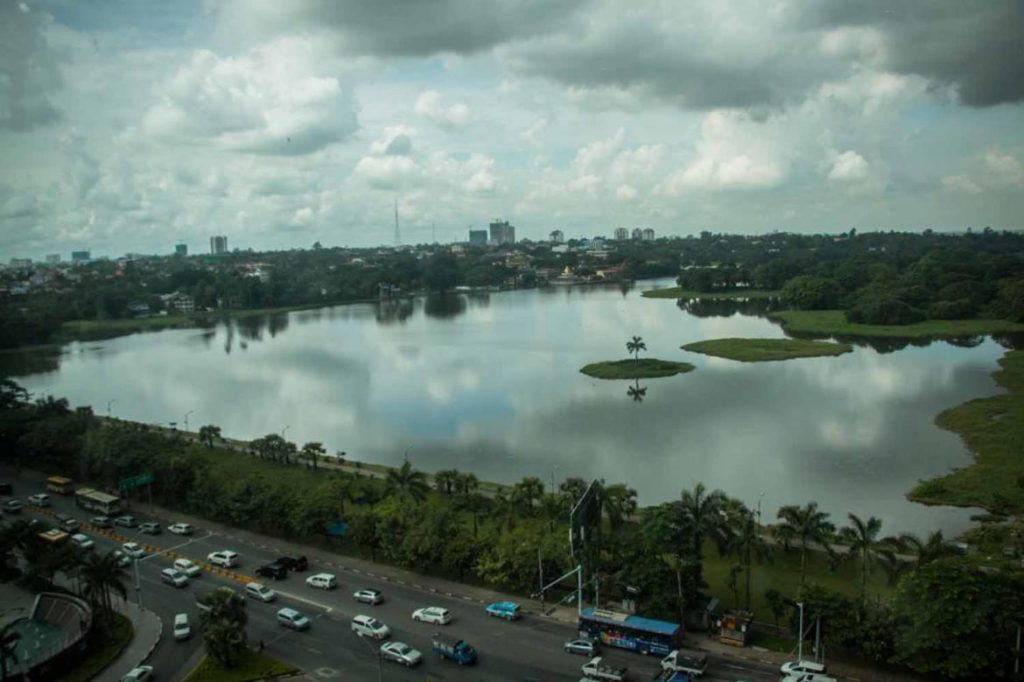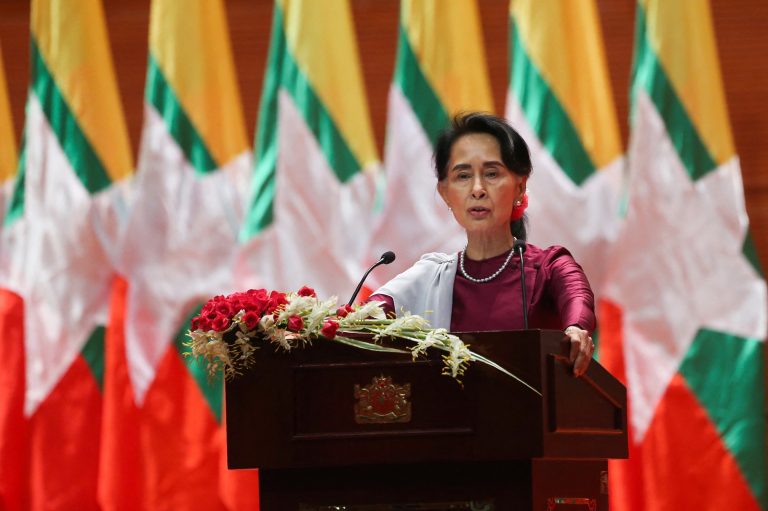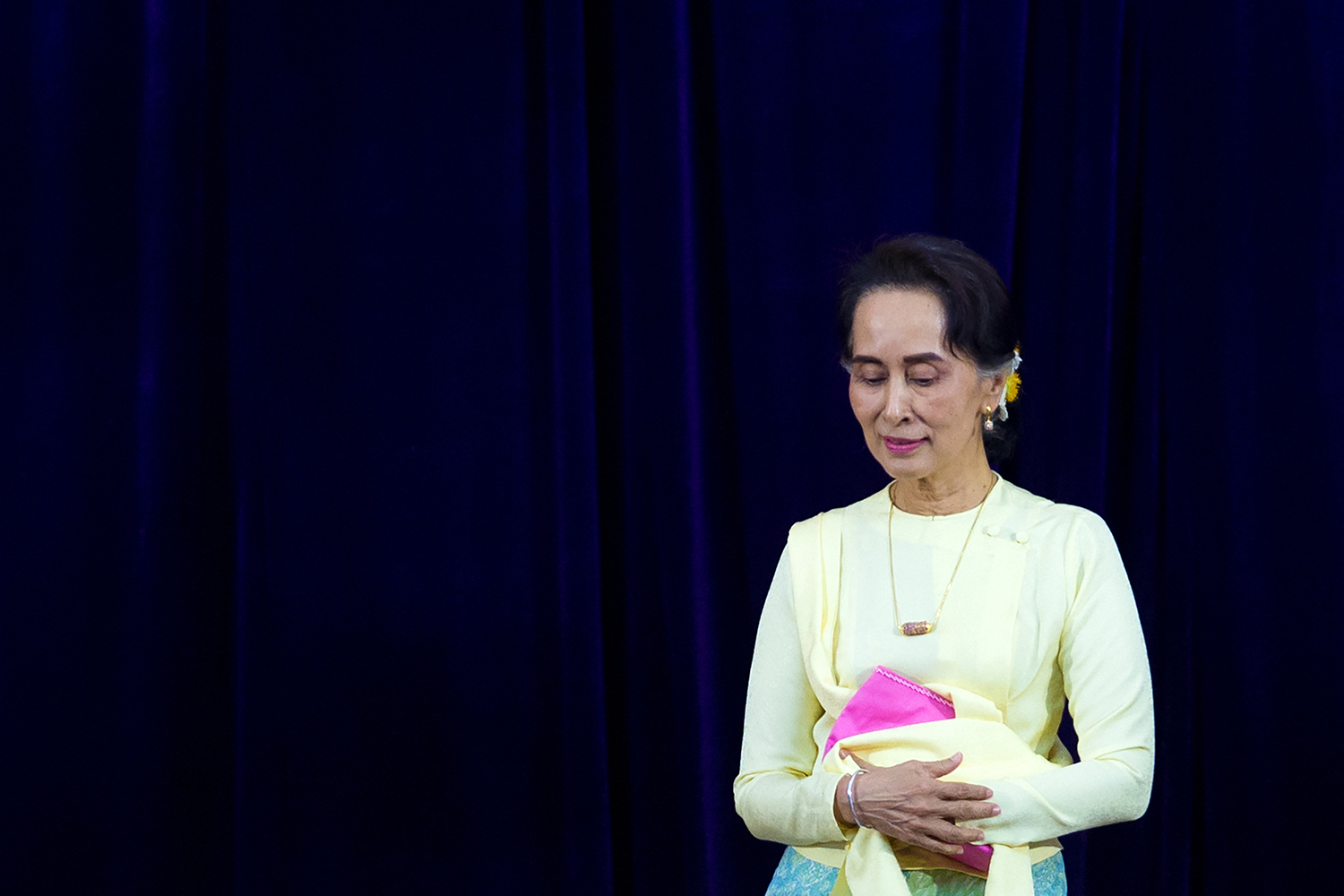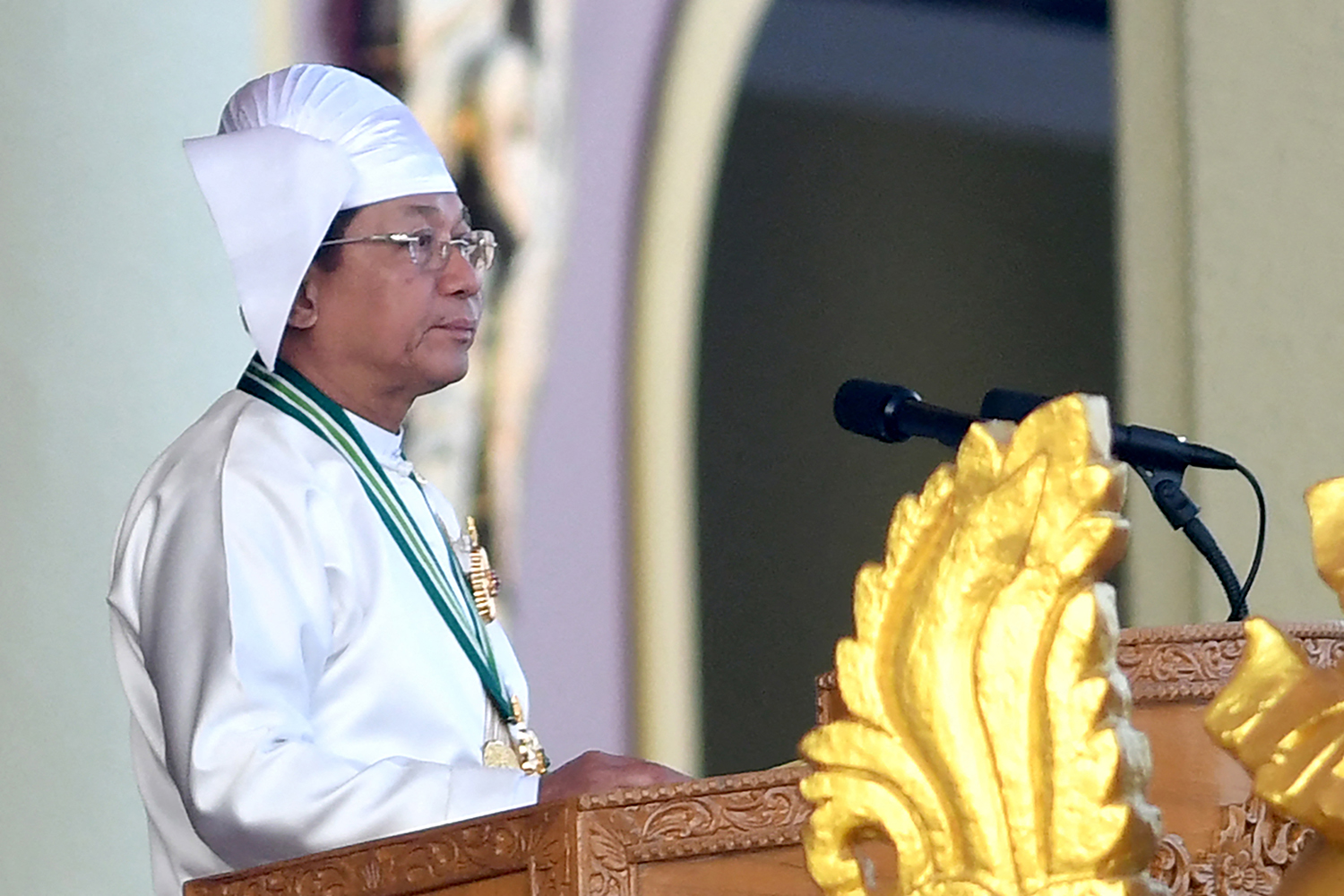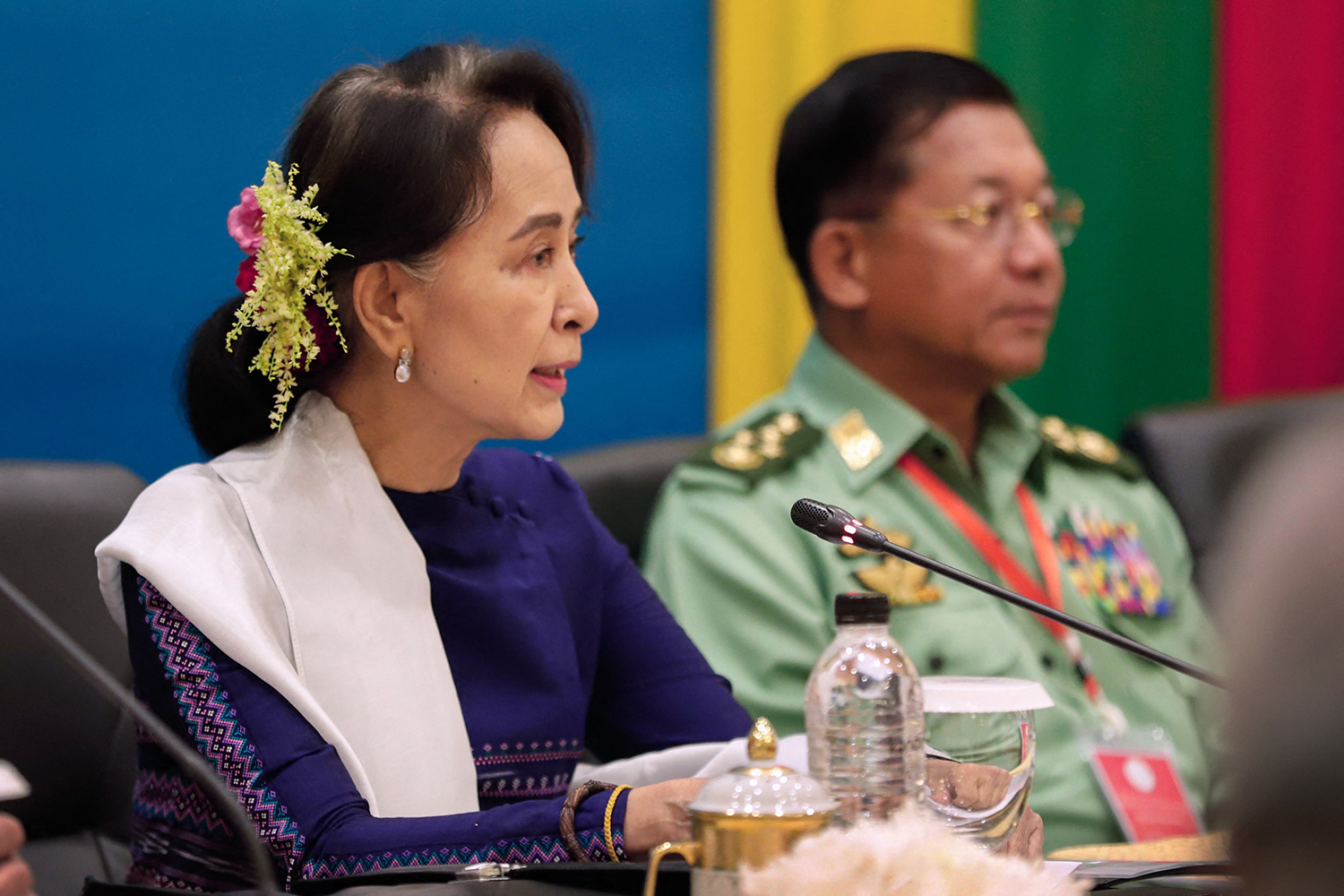From cursed treasure and underwater monsters to savagely suppressed protests, Inya Lake has a surprisingly colourful past.
By JARED DOWNING | FRONTIER
REVEREND TIN Maung Tun, 86, moved to the Inya Lake’s southeastern shore from Insein to avoid Allied bombing raids during World War II.
He spent afternoons swimming in the cool water, exploring untouched islands – where giant tortoises roamed and you could catch fish the size of a grown man, he claimed – and listening to the tales of old fishermen.
Their stories were from a time when the area submerged by the lake was still a collection of creeks and lagoons. He asked them why the lake seemed to have three names: Some called it the British name, Victoria, others Kokkine, and still others Inya.
“I kept asking, and very elderly people said first there was only a small lagoon called Inya,” he said. There was a shrine in the middle of the lagoon, and people would swim to the bottom to bury treasures as offerings for the forthcoming Buddha, as well as curses etched on clay tablets for those greedy enough to plunder them, he said.
tzh_innya4a.jpg
Support more independent journalism like this. Sign up to be a Frontier member.
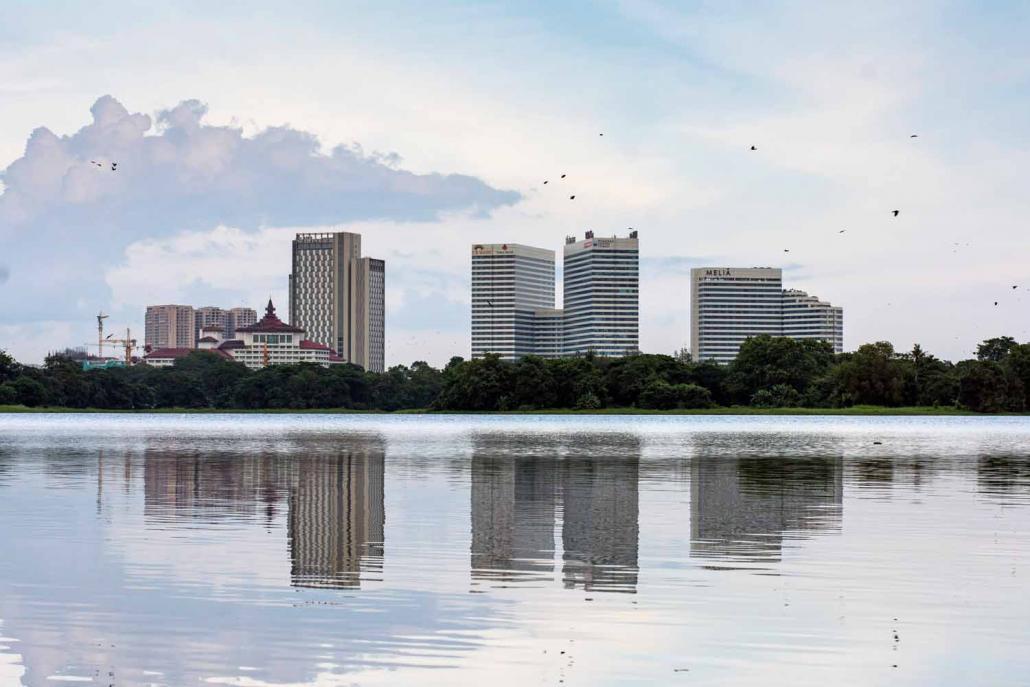
Teza Hlaing / Frontier
“I have testimonies where people have found treasures, picked them up, taken them home, and [people from] their whole house got itches over their whole body,” Tin Maung Tun said. “And they have to put it back because it is guarded by the spirits.”
Eventually the Inya lagoon was flooded when the British selected the area known as Kokkine as the site for a reservoir that would form part of the water supply network for rapidly growing Rangoon. The project, undertaken in 1882-83, involved building levee banks that are today lined by sections of Pyay and Kabar Aye Pagoda roads.
The British dubbed the reservoir Victoria Lake, although many locals still called it Kokkine. Orchards and elegant estates were established on its shore and Rangoon University relocated to its current location near the lake in 1920.
By then the shrines and treasures of Inya, if there ever were any, were all but forgotten in the new, colonial Rangoon.
Wartime oasis
Tin Maung Tun hasn’t heard of any diving expeditions at the lake. But such an expedition might yield crates of weapons and ammunition from the Japanese occupation between 1942 and 1945.
The Japanese Imperial Army operated a secret weapons factory on the lake’s large eastern peninsula, although it was disguised as a Burmese navy training school. Even the Shan villagers living on the peninsula at the time did not know about the factory, although this was probably because in those days it was safest to mind one’s own business, Tin Maung Tun explained.
tzh_innya21a.jpg
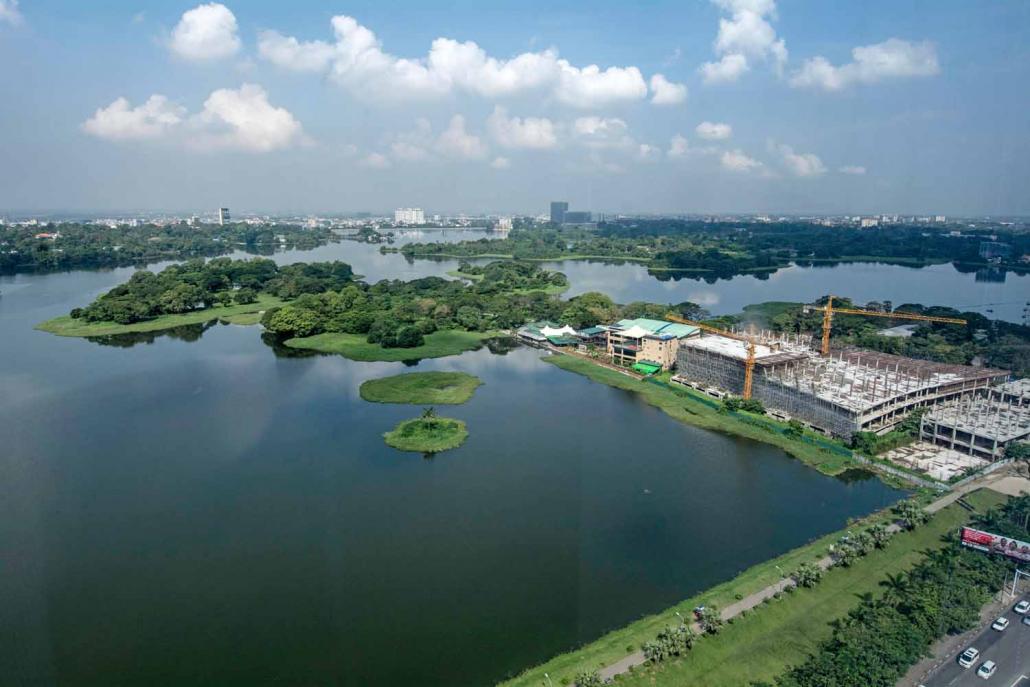
Teza Hlaing / Frontier
Allied bombers finally hit the peninsula with incendiary bombs late one night in 1945. Tin Maung Tun remembers watching the inferno from across the water.
“It looked like some little tubes falling down and the entire place got burned up. And [there was] smoke coming up through the trees,” he said. “But there wasn’t any big noise. The bombs didn’t have [shrapnel]. … They caused fire, even on the water, the surface of the water all burning, and the Japanese, poor chaps, they tried to run into the water, and when they came up they got burned.”
After the Japanese defeat, Tin Maung Tun and his neighbours boated over to salvage what they could, but the occupiers had sent almost everything of value to join the cursed relics in Inya’s depths.
Guns, Russians and a dictatorial hissy fit
Tin Maung Tun lived by the lake for years after the war, during the brief period of democratic rule after independence in 1948. The Rangoon Scouting Association held jamborees on one of the islands, and lakeside clubs hosted sailing, rowing and swimming races.
There was also a lake monster. Or at least, rumours of one were reported by the vernacular press in 1947, Tin Maung Tun claimed, although nobody had any specific details about the creature, only that there was one.
The monster rumour died out as quickly as it began, but after General Aung San was assassinated the same year, another rumour surfaced: That the conspirators, who had hidden crates of weapons on the lakeside, had made up the monster story to discourage people from poking around.
Among the rich and famous who built grand homes on the shore of Inya Lake was the dictator, General Ne Win. He built a house on a peninsula on the lake’s northwest corner, off Parami Road.
tzh_innya31.jpg
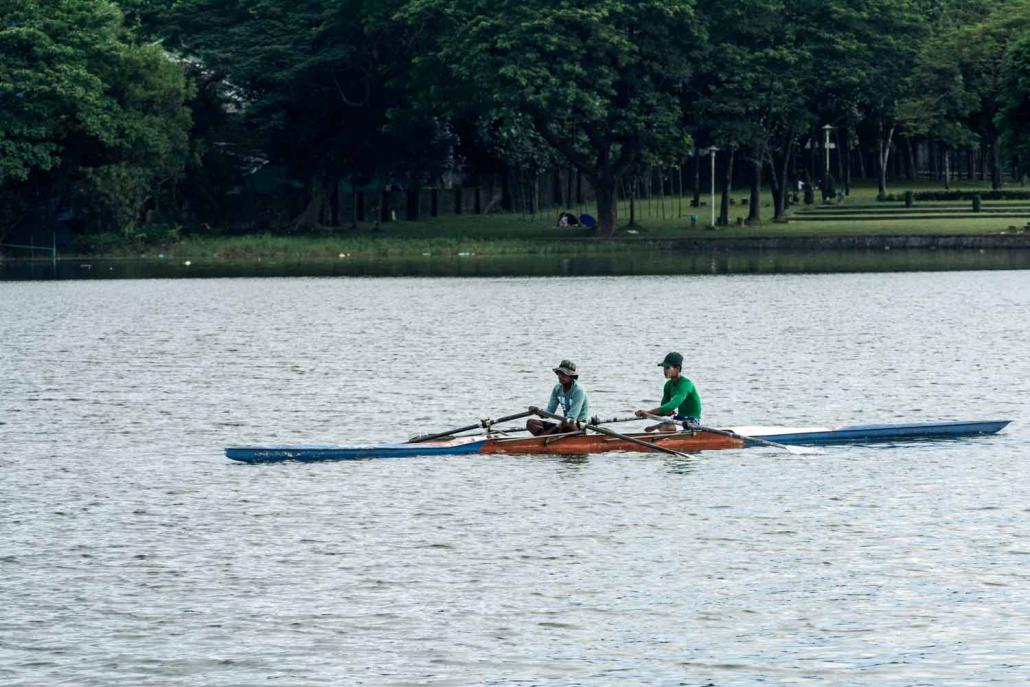
Teza Hlaing / Frontier
However, the most famous lakeside address is 54 University Avenue, the residence of State Counsellor Daw Aung San Suu Kyi, in which she spent a total of 15 years under house arrest between 1989 and 2010. Aung San Suu Kyi’s mother, Daw Khin Kyi, moved into the house in 1953.
Under Ne Win’s socialist regime, the open lake was considered as vulnerable as it was strategic. Soldiers patrolled its banks, keeping swimmers and boaters under close watch.
To this day, the eastern peninsula where the Japanese made weapons during the war remains a secret military facility. Bizarrely, the peninsula also features the Inya Lake Hotel, which opened in 1962. The hotel was a gift announced by the leader of the Soviet Union, Mr Nikita Khruschev, during a state visit in 1958, at the height of the Cold War, when studiously non-aligned Myanmar was being courted by both Moscow and Washington.
A high-society dance party at the Inya Lake Hotel on Christmas Eve of 1975 aroused Ne Win’s famous temper. According to Mr Robert Taylor’s political biography of Ne Win, the dictator was at home watching a movie with friends on a roof-top terrace when their evening was interrupted by the sound of the rock band playing at the party.
A furious Ne Win stormed into the hotel’s ballroom accompanied by eight soldiers, where he punched a hotel security guard, grabbed a protesting Norwegian by the jacket and finally kicked the band’s drums.
Some said Ne Win was angry because his daughter was at the event, others that he resented the interruption to his evening. Whatever the reason, it added to Ne Win’s notoriety, casting him as more Mafioso than head of state.
The Lady’s backyard
In 1988, Rangoon University and Aung San Suu Kyi’s lakeside residence became two of the epicentres of the student-led 8-8-88 national uprising.
On March 16, 1988, students marching along Pyay Road were blocked by troops on the causeway over the lake near Ne Win’s residence and trapped from behind by feared Lon Htein riot police. Scores of students were killed – some were under the water until they drowned.
The lake was in the news again in May 2009. Two weeks before the scheduled release of Aung San Suu Kyi from her latest period of house arrest, an American Mormon, Mr John William Yettaw, 53, swam across to her residential compound. He had prophesied that she would be assassinated and wanted to warn her of the supposed threat to her life.
It was the second time Yettaw had swum the lake to 54 University Avenue (the first was in late 2008), and although Aung San Suu Kyi was reported to have been displeased by his presence, she allowed him to rest when he complained of cramps. Yettaw left the compound late on the night of May 4 but was arrested after being seen swimming near the International Business Center on Pyay Road at dawn the next morning.
tzh_innya32.jpg
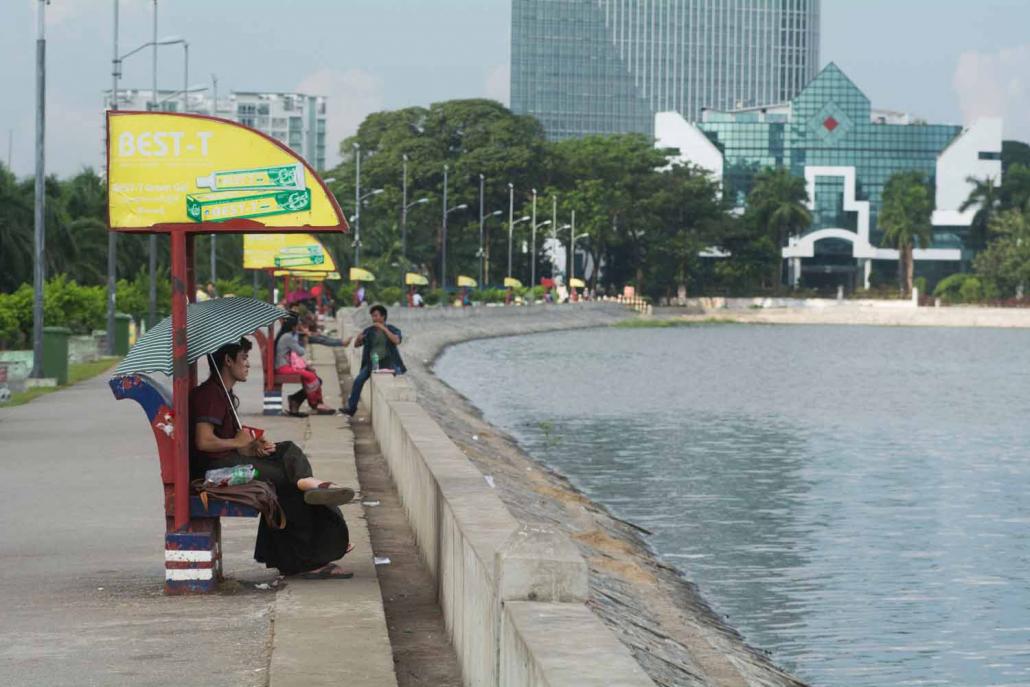
Teza Hlaing / Frontier
On August 11, 2009, Yettaw was sentenced to seven years in prison, including one year with hard labour for swimming in a restricted zone, but was deported about a week later. Aung San Suu Kyi, who was charged under the law safeguarding the state from the dangers of subversive elements for breaching the terms of her house arrest, was initially sentenced to three years’ hard labour, but at the intervention of junta leader Senior General Than Shwe, the sentence was reduced to 18 months under house arrest.
Aung San Suu Kyi had been due for release from six years of house arrest on May 27. The sentence ensured that Aung San Suu Kyi would not be able to contest elections that the junta had said in 2008 would be held in 2010. She was released on November 13, 2010, six days after the election, which was boycotted by her National League for Democracy.
These days, the only riotous behaviour at the lake occurs during the Thingyan traditional New Year celebrations, when thousands of litres of water are pumped out of the lake and sprayed over throngs of revellers.
The military still operates its secret factories on the eastern peninsula, but the lake’s shore is best known for grand colonial and contemporary villas, monasteries, the United States embassy, and parks dotted with umbrellas hiding young lovers who have no memory of ancient curses, bombing raids or drowned protesters.
Top photo: Nyein Su Wai Kyaw Soe / Frontier


